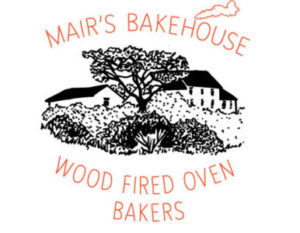Matilda is the name we gave to our Retained Heat Wood Fired Oven . Matilda means ‘mighty, strong in battle ‘ .Matilda was designed by an Australian called Alan Scott . So we felt out of respect for Alan and because we knew the oven would be strong Matilda felt like the right name . ( I like to give tools I work with names , crazy I know )
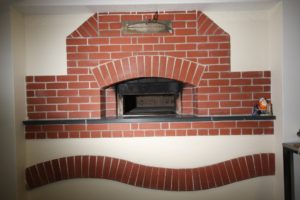
Working with Matilda is a pleasure and hard work . When heating up ( firing ) a retained heat oven your aim is to get as much heat as possible into it’s outer layer of high heat cement or reservoir .
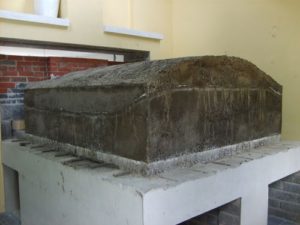
Our Baking week had three bakes . Tuesday, Thursday and Friday . Each bake would produce 250- 300 loaves of different sizes and 50 vegetarian Pasties .

To achieve the necessary heat the first fire was placed in the oven on Sunday night . Wood would be put in the oven for about three and a half hours , about a six hour burn time . At the end of the burn the hot coals are raked across the whole of the oven hearth . Once the coals have dimmed a metal sheet is placed across the oven doorway and left overnight . About eight hours .
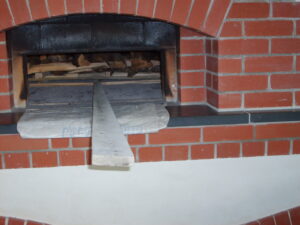
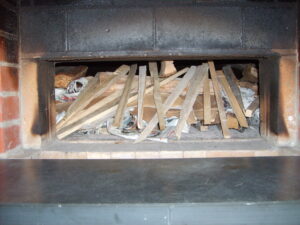
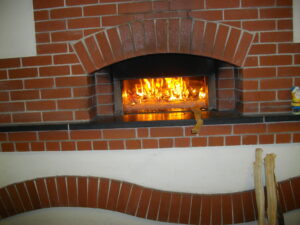
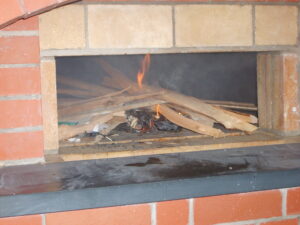
Monday morning 6a.m the ash is raked into the ash pit below the oven and a new fire is set in the oven the same as Sunday night . The same pattern of wood loading is repeated as Sunday night . A third fire is placed in the oven Monday night and again left overnight for the heat to percolate up through the bricks toward the outer reservoir . The final fire is early Tuesday morning , normally a slightly shorter length fire after which the metal sheet is put on until about 3 p.m . Then the ash is swept out of the oven and the oven hearth mopped with a damp mop to clean out any ash so oven is ready for baking .
Very long tools are needed for cleaning the oven . The rake for moving the ash is almost 12 feet ( 4 metres ) long
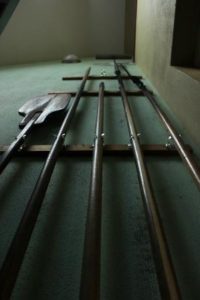
After the oven has been cleaned the door way is left open to allow some heat to leave the oven chamber so the heat is right for the first bake around 6 p.m
It is quite a balancing act trying to get as much heat as possible into the outer reservoir and at the same time cool the oven chamber ready for baking . To help know what the temperature in different parts of the oven is there are six probes in the brick work , three in the base and three in the roof , connected to a small gauge outside the oven . This gauge will tell the Baker what is happening throughout the oven but unlike conventional ovens the heat is what it says and you can’t add heat to alter the temperature , the fire is out
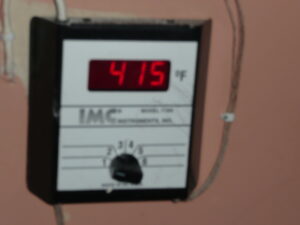
We would aim to start baking between 6 and 7 pm . Generally after 8-10 hours after the last wood was added to the last fire , the oven ‘ reservoir ‘ would reach it’s absorption limit and at that point the heat ‘ turns’ with the oven bricks allowing the heat to change direction and start transferring heat toward the oven chamber . To maximise use of the heat you need to ideally start baking just before this happens . As the oven is at it’s fiercest when you start to bake you put breads which can take good heat in the first oven load . In our case that was Baguettes on trays or White Sourdough loaves , or if we were doing Traditional Yeasted the Bloomers and Cottage Loaves on trays . Basically on the first oven load you are trying to take the ‘sting’ out of the oven to ‘calm’ it down
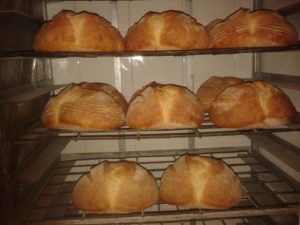
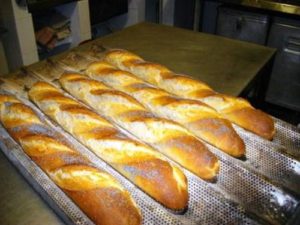
Bake time was approx 20- 40 minutes on first oven . Second oven would be enriched breads like , Walnut, Olive , Seeded , bake time about 35minutes .
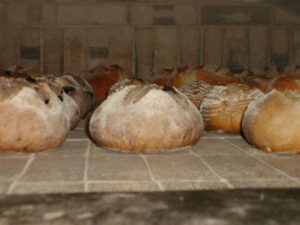
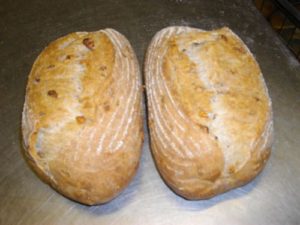
Then the third oven was by then the right heat for the vegetarian Pasties and Cheesy biscuits
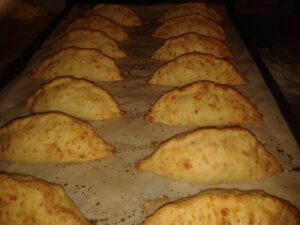
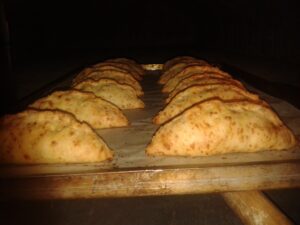
After the third oven it would normally be 30-45 mins before the fourth oven could be loaded as the oven chamber needed to be ‘re charged’ with the heat from the outer layers of the oven . This is one of the times when ‘ logistics ‘ comes into the world of the Retained Heat Oven Baker more so than in bakeries with conventional multi deck ovens as we had no fridge or cool room to slow the development of the bread doughs , which we kept in covered racks .
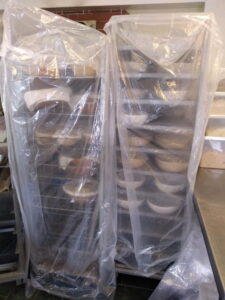
Mixing dough and shaping doughs had to be planned to coincide with oven ready times . Fun !! Generally we did 5-7 0ven loads in a bake session and this ‘resting time’ between ovens became longer as the night went on which meant the Bake day could stretch from 5.a.m until 2.a.m the next day . ( 20-22 hours )
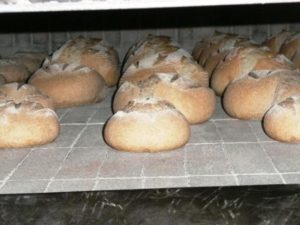
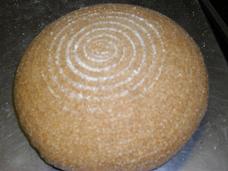
The last ovens would take the heavier doughs like 100% wholemeal , Country Rye , Spelt , then the final oven would take tinned Rye and any Tinned Sourdough Loaves which we were making that night .

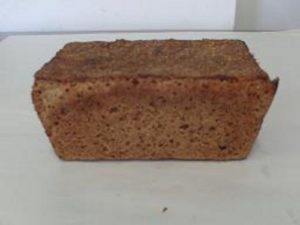
In between bake days it was only necessary to do one long and one short fire in the oven as it had left over heat from the previous Bake . Matilda’s heat retention was so good you could bake cakes Sunday morning without any further fire since the Friday bake session .
